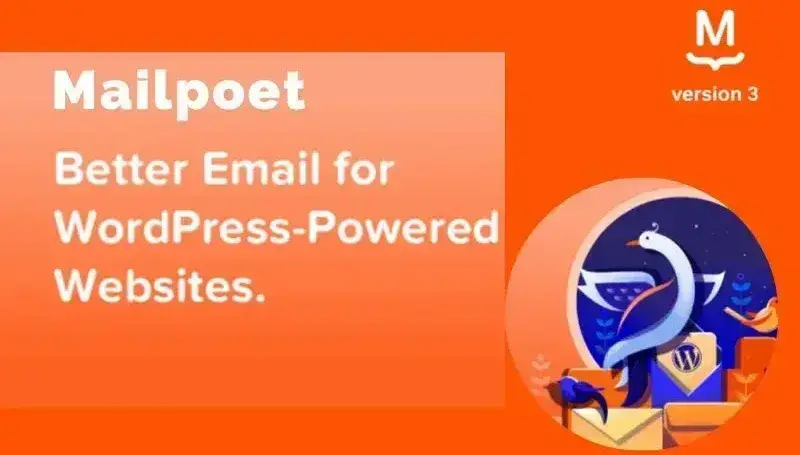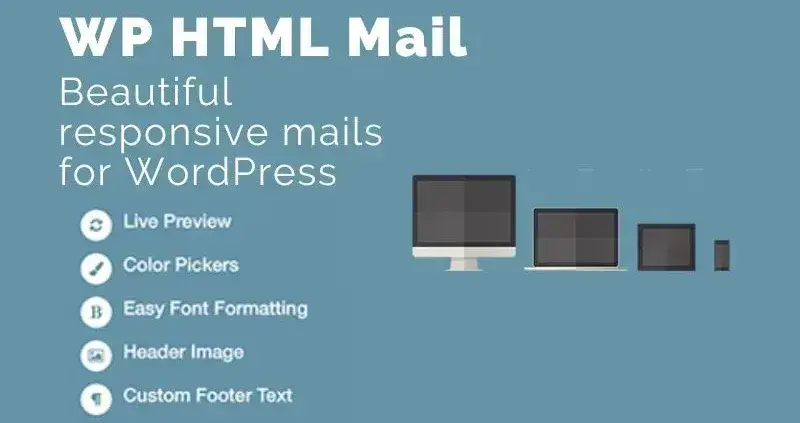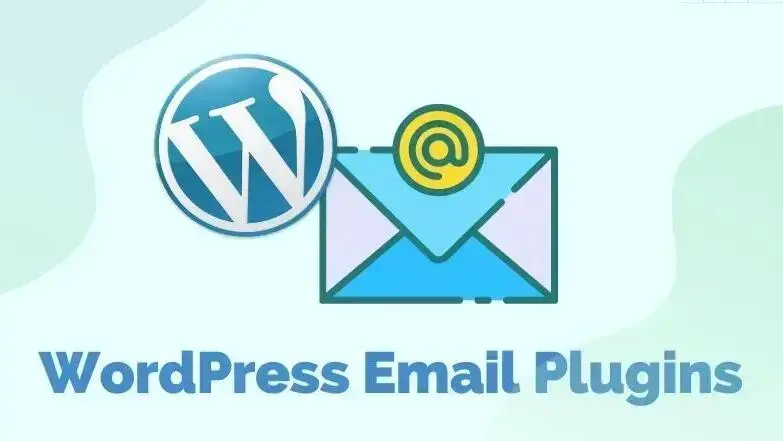Running a WordPress website for business would need strong user engagement, especially to promote products and services or give announcements and updates. One of the ways to build this strong engagement is by sending emails or newsletters regularly to web customers.
In the earlier time, emails for customers or newsletters were designed using tables or newsletter templates from email marketing providers like Mailchimp or Sendinblue. However, these days you can create beautiful newsletters directly from your WordPress back end using plugins.
In this article, you will learn more about WordPress email plugins and be introduced to several WordPress email plugins with unique features to fit your business and help you build a good network with your web customers.
What Does the WordPress Email Plugin Do?
WordPress email plugins would typically have some specific functionalities or features as followings:
Provide email templates
Opt-in form
Manage subscribers
Automatic response
Manage and schedule newsletter
Email marketing
Provide Email Templates
A WordPress email plugin allows you to create an email layout from scratch, but working from an email template is a great time saver, and would be very helpful for the no-coders. These email templates are relatively easy to customize to fit a web company brand.
Opt-in Form
Another important feature that a WordPress email plugin often offers is an opt-in form to get as many web subscribers to follow web content updates. The opt-in form can appear as popups, slide-ins, or just simply embedded into a web page.
Some plugins can have some more settings for the opt-in form such as conditional appearance or visibility settings based on logged-in-out users or based on the user roles. Additionally, a trigger appearance option can be set based on the time a user started to open a web page.
Manage Subscribers
The next thing that is also a crucial component of a WordPress email plugin is how good they are to manage the email subscribers. It began when a user started to subscribe and automatically registered with a default role.
Subsequently, the subscriber list would have easy-to-control user administration and moderation in the interface. Some plugins could have more advanced features to show the subscriber’s status, whether it’s an active/ inactive subscription, unconfirmed, or bounced.
Automatic Response
Following up on the initial subscription process, an email plugin can send an automated welcome email. This welcome email can also be sent to new customers when they make their first purchase.
Manage & Schedule Newsletters
Newsletters would need to be delivered on a specific schedule for effective business campaign marketing. Hence careful newsletter management should include an option to manage how frequently newsletters are sent to the subscribers.
Email Marketing
Last but not least the WordPress email plugin could use the optimum option to grow the mailing list with integrated email marketing functionality. It could be just a built-in email marketing feature or integration to email services such as MailChimp, AWeber, and many more.
It can also provide interactive lead generation by sharing freebies that require an email subscription or starting polls, and quizzes that make the potential subscribers feel fun and welcoming, yet be provided with useful content.
Tips to Choose the WordPress Email Plugins
Besides providing the main features, the WordPress email plugins would be most useful with some additional settings and options to add value to their performance. which can help you to choose among many of them. These options are as mentioned below:
Easy template customization
Easy integration and compatibility
Newsletter analytic and statistic
Export/ import data options
GDPR ready
Email test options
Template Customization
As we know that the WordPress email plugin often provides email templates, which should be easy to customize and responsive. A nice email template can have an easy option to add rows and columns in the layout, and also be provided with inline CSS or custom CSS options to make the design and template easily customized.
Integration & Compatibility
Once installed, a WordPress email plugin is expected to work optimally with an easy integration option to another eCommerce plugin such as the very popular WooCommerce. The integration to some third-party mailing lists also is a plus for a WordPress email plugin to start an effective newsletter campaign.
SMPT plugin compatibility also plays an important role because Simple Mail Transfer Protocol, or SMTP, works as an email protocol used to send and receive emails over the internet with high accuracy. Emails sent via SMTP contain authenticating data, which significantly increases the successful delivery.
Newsletter Analytic & Statistic
Email marketing relies on analytics and statistics because email is one of the primary means of turning users into customers. It concludes that a WordPress email plugin should have a good statistical dashboard feature and additionally can integrate with Google Analytics.
Export/ Import Data Options
Regarding data backup of email templates and subscriber lists, pick a WordPress email plugin that usually has an export/ import option feature. The exported subscribers list data can also be helpful for further email marketing analysis.
GDPR Ready
GDPR stands for the General Data Protection Regulation. The European Commission approved this privacy law on April 14, 2016, to protect the rights of all EU citizens (who are spread across the 28 member states) and their personal data. It is accordingly crucial to make sure that a WordPress email plugin meets GDPR compliance.
Email Test Option
Before sending your first created email design to many email subscribers, it’s always a good idea to send an email test to see if all settings in your email content work properly. Not all WordPress email plugins have the feature to switch to email test mode, but it can be a good consideration when you choose an email plugin.
Security Settings
Email subscriptions can be challenging on the security side. Some plugins would include Captcha settings and perform subscription spam checks in its configuration. More advanced protection would have options or settings to blacklist some malicious domain/ IP.
7 Best Free WordPress Email Plugins
The list features free WordPress email plugins that provide email templates, allow you to design or build an email layout, and several of them give you many options for email marketing.
Mailpoet
Newsletter
Email Templates
WP HTML Mail
Creative Mail
Email Subscribers & Newsletters
Hustle
1. Mailpoet

The Mailpoet is one of the leading WordPress email and newsletter plugins with a bunch of features, starting from subscription form, and newsletter builder, and provides integration with the WooCommerce-related emails to optimize customer conversio
Pros And Cons of Mailpoet
Pros
Cons
2. Newsletter

The next popular WordPress email plugin is the Newsletter plugin which offers statistics and tracking functionalities. It’s relatively secure as there is a subscription spam check with domain/IP blacklists, Akismet, and captcha.
Pros And Cons of Newsletter
Pros
Cons

If you’d prefer to have a simple email customizer on your WordPress website, the Email Templates plugin offers you an easy and basic interface to start with. The email template customization interface resembles the WordPress website live customization interface, which every WordPress user is familiar with.
Pros and Cons of Email Templates
Pros
Cons
4. WP HTML Mail

This WP HTML Mail plugin is pretty flexible and modular with an integration option to help you decide which additional supporting plugins that fit your website requirements. Some are not free yet you have full configuration control on the plugin that will not sacrifice your website performance for having unnecessary addons or extensions installed.
Pros and Cons of WP HTML Mail
Pros
Cons

The Creative Mail would probably be the most installed WordPress email plugin. After installing this plugin, it will create a WordPress instance that is connected to your Creative Mail account. In other words, most of the settings and customization are done in the Creative Mail app external site.
Pros and Cons of Creative Mail
Pros
Cons

This email plugin has a couple of different email campaigns. The first is by creating post notification, and the second campaign is to send broadcasts to the audiences.
Pros and Cons of Email Subscribers & Newsletters
Pros
Cons
7. Hustle

This plugin focuses on email marketing and lead generation by allowing you to create a pop-up, slide-in, and embedded opt-in forms or promotional offers with CTA. It’s easy to integrate with the best email services for more functionalities.
Pros and Cons of Hustle
Pros
Cons
Conclusion
WordPress plugins for email marketing must prioritize solid deliverability either using built-in SMTP, compatible with other SMTP plugins or just having good plugin infrastructure to make it work flawlessly.
In the article, we have learned that WordPress email plugins can have multi-functionalities, or just focus on one specific function. However, it’s best to choose a plugin that has flexibility in integration with additional email services or other email plugins. This is because multi-function WordPress email plugins can be extremely complex in configuration and would avoid unnecessary features cluttering the WordPress admin dashboard.
And if you want to ensure your WordPress site is hosted with a reliable provider, consider using hosting for WordPress or managed hosting servers for WordPress from Verpex.
Frequently Asked Questions
Are WordPress plugins free?
WordPress has loads of plugins you can install, some of them are free, but some of them you will need to pay for. You can learn how to use WordPress Plugins on our blog.
What is the best WordPress migration plugin?
Some of the best WordPress migration plugins are Bluehost Migrator, Migrate DB Pro, BackupBuddy, Migrate Guru, JetPack, Duplicator, and more.
Is a website on WordPress safe?
Websites on WordPress are safe, however to avoid hacking keep your website up to date.
How do I keep WordPress plug-ins up to date?
In most cases, your plug-ins will scan for updates automatically, but it’s always worth logging into your dashboard on a regular basis and performing a manual scan. This can usually be done in just a few clicks.

Audee Mirza is a graphic designer and WordPress developer at audeemirza.com who resides in Surabaya, Indonesia. She's also the author of Graphic Identity Blog, a professional logo designer, and often creates vector illustrations for clients and marketplaces. She enjoys good typography design and all kinds of animation.
View all posts by Audee Mirza



















